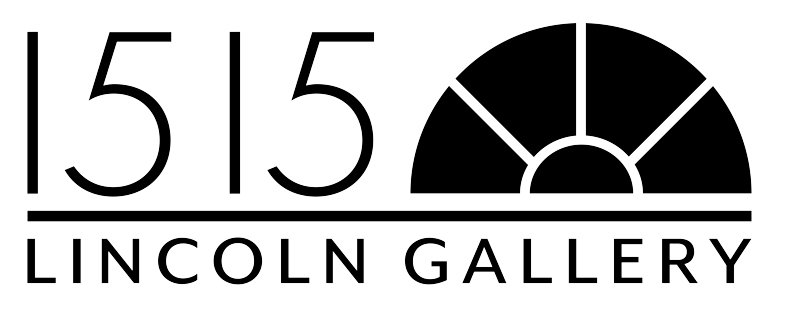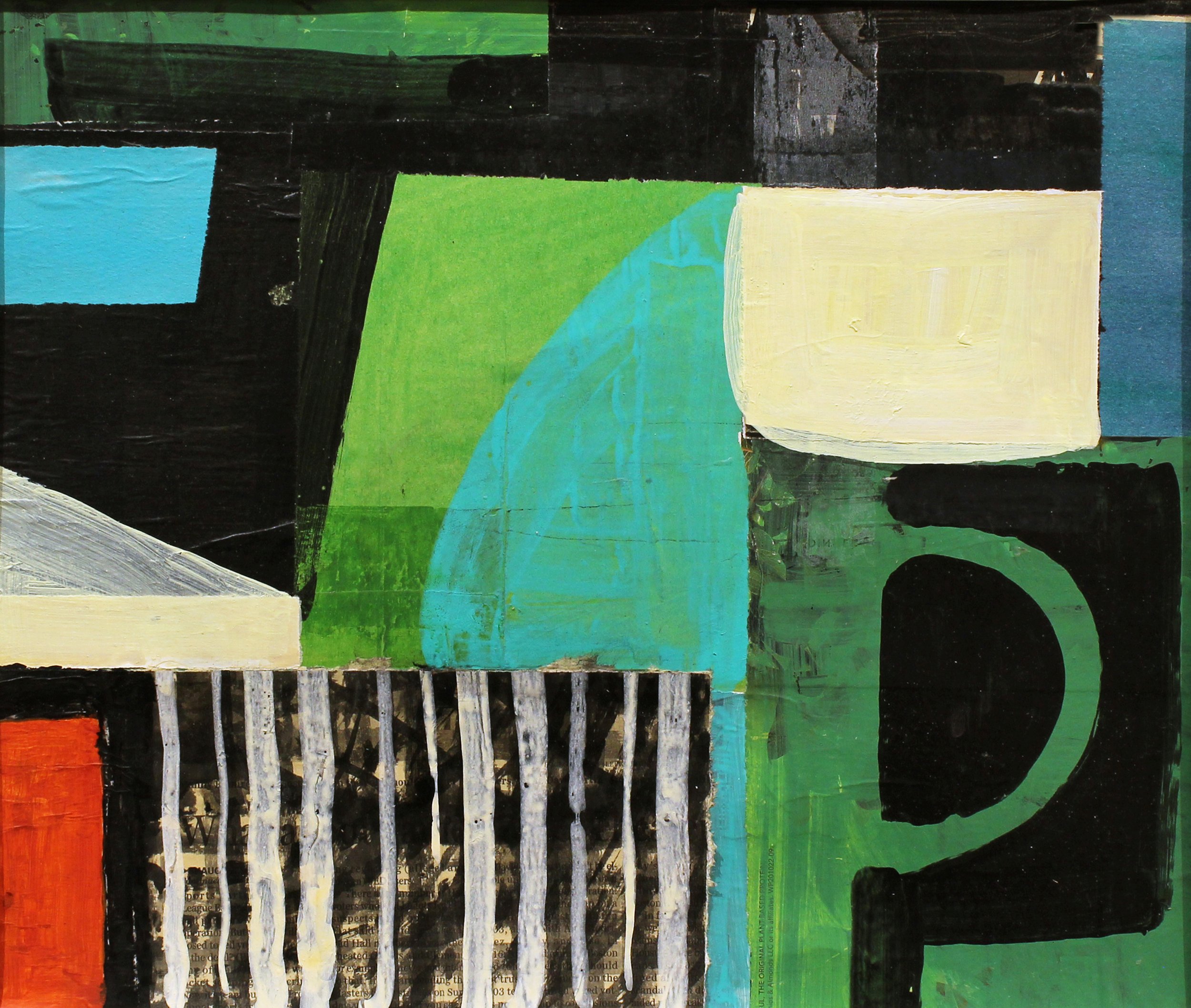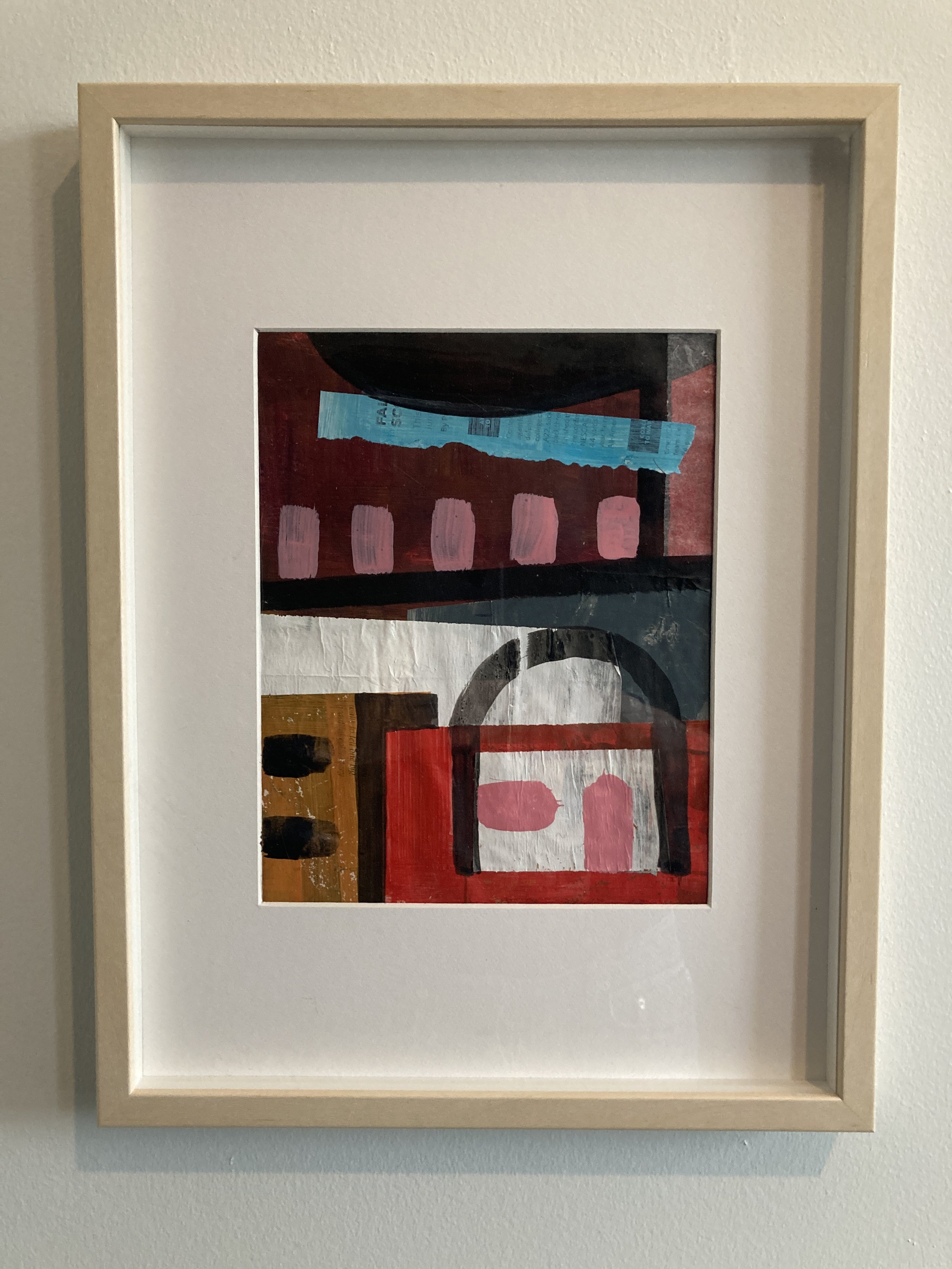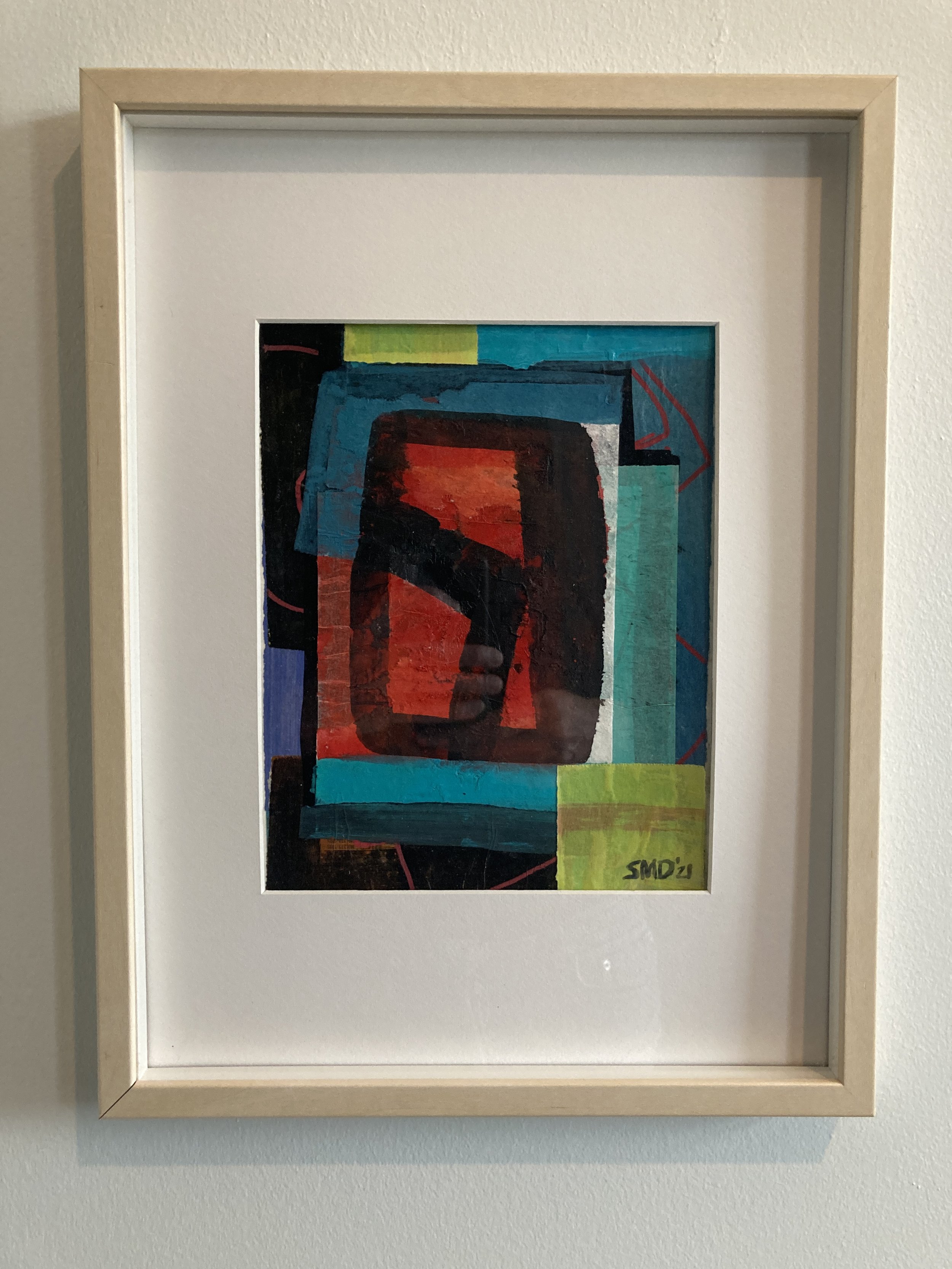SUSAN MORRISON-DYKE
“My abstract paintings currently explore elements of vernacular imagery in American culture arrived at through familiarity and intuitive observation.”
BIOGRAPHY
Susan Morrison-Dyke graduated with a BFA from The School of the Museum of Fine Arts and Tufts University and received the James William Paige Traveling Scholarship, a prestigious 5th Year graduate program award. She was later awarded the Clarissa Bartlett Traveling Fellowship for Alumni at The School of the Museum of Fine Arts. Both awards allowed her to travel the world making a permanent impact on her work. Susan was highly visible in Boston’s explosive cutting-edge art scene where she was represented by Stux Gallery in both Boston and New York. She later moved to New York where she worked for Phyllis Kind Gallery and was represented by Richard Green Gallery in SOHO. She eventually relocated with her young family back to her hometown of Oklahoma City, staying 22 years before returning to The Fenway Studios to live and work in Boston. Her large-scale paintings have been featured at Boston’s Institute of Contemporary Art, Museum of Fine Arts in Boston, Aldrich Museum, Danforth Museum, Provincetown Museum, Berkshire Museum, Brockton Museum, Harvard University, Tufts University and Boston College among many other galleries and universities throughout the country. Private and public art commissions include OKC’s Barons gift for Aubrey McClendon at Chesapeake Energy, Architectural Design Group’s (ADG) gift to St. Anthony Hospital, Special Care, Inc. Murals, Oklahoma City Police Headquarters Acquisition of Ballpark Murals Paintings, New York’s MTA Arts for Transit Subway Murals at Borough Hall Station in Brooklyn and The Bricktown Ballpark Murals for OKC’s Metropolitan Area Project (MAPs) Public Art Program.
ARTIST INSIGHTS
How are your background and life experiences connected to your art?
I studied with great artists, among them American painter Friedel Dzubas at the Boston Museum School of Fine Arts. He came to America after having studied with Paul Klee in Berlin, shared a studio with Helen Frankenthaler in New York and was a friend of Jackson Pollock’s. He introduced me to the Lyrical Abstraction movement which greatly influenced my early work. There were one-on-one critiques and lectures with his friend, the critic Clement Greenberg who was still championing the Abstract Expressionists and Color Field painters. It was a high energy time to be in Boston and it was all about the work. Everyone was doing great painting and completely immersed in ground-breaking art, myself included. When David Ross, director of the Institute of Contemporary Art in Boston (later Whitney Museum) chose to showcase my work, he selected four of my large-scale paintings based on their cross-cultural and visual impact. I was the only woman artist in the show among my male counterparts which was not unusual at the time. The odds for a woman to succeed as an artist was very low compared to a man. And so, I felt very fortunate to have received a studio visit for the 1986 Whitney Biennial (as one of only two Boston artists) and award from the director of the Whitney Museum. It solidified my confidence that I could make it as a serious artist, respected for my paintings and vision.
Who are some of your biggest artistic influences?
Mondrian, Leger, Gottlieb, Gorky, Picasso, Matisse, Stuart Davis, Torres-Garcia, Pop Art, mid-century design and kitsch. I like blending serious with ironic and using juxtapositions of opposites. Visual surprises encountered in everyday life are inspiring and the idea of using the “mundane” as subject matter for art.
How have you developed your artist career?
My artistic career has developed through years of hard work, exhibitions, traveling, teaching and public art projects.
What does your artistic work intend to communicate to its audience?
My current work evokes a conduit to a liminal space in my memory. Architectural hints emerge to create a feeling of abstract rooftops and glass windows allowing the viewer a glimpse into an ephemeral yet familiar world. Inspiration from my visual interpretation of Torres-Garcia’s Constructivism and his theme of Universal Man has always provided a template for expressing similar narratives and style.
Does your work comment on any current social or political issues?
During the long pandemic lockdown, my yearning for a national solidarity morphed into a wistfulness of long forgotten places and past experiences when innocence and naivety coexisted. Recollected impressions from vintage game boards, old signage and common objects of childhood have all served as subject matter in my current series of paintings. While wanting to pay homage to chess (a “brain-saver” during the pandemic) my initial sketches culminated in Gambit. Playing chess was especially welcomed during the long isolation period. The players are always tested on every possible level of intuition and skill including making great sacrifices to achieve success. I equated this concept to surviving the pandemic and lockdown.
Do you have a particular story that stands out from your career as an artist?
I felt like I won the NY lottery (from an immense pool of New York artists) in that I was selected to design two large subway murals and submit them for the New York Arts in Transit Public Art Program for the incoming and outgoing trains at Borough Hall Station in Brooklyn. I had one month to design it. At the presentation, I nervously offered my finished prototypes to the architects and city planners to consider and vote on - but as I started to leave the building they stopped me and had me come back to the meeting. With unanimous consent they offered it to me on the spot. It was truly like winning the lottery.
What is one thing you would like your audience to know about you?
Aside from being in the studio I thoroughly enjoy live theatre, playing chess and the guitar.
Which current art world trends are you following?
Though I keep up with current art, I’m much less concerned with trends and more concerned with my own instincts. I learned the importance of a personal vision which is not always the work that sells easily. I love nothing more than spending perfect days at MOMA and The Met viewing timeless and enduring art.
Why have you chosen to sell your work at 1515 Lincoln Gallery?
Continuing a strong connection to my native Oklahoma is important to me. I am very excited about the new gallery space and the direction that Susan McCalmont is planning to take it.
What do you believe makes 1515 Lincoln Gallery distinct from other galleries?
Susan’s unique ability to connect to the community and her impressive accomplishments in promoting the arts in Oklahoma. I’ve known Susan since 2003 and we’ve always shared a friendship through the arts and our community.
WATCH
Inspirations from Nature: Paintings by Anthony Dyke and Susan Morrison-Dyke
In 2019, Anthony Dyke and Susan Morrison-Dyke have created an exhibition of paintings inspired by nature at the Myriad Gardens’ remodeled visitor center.
ARTIST STATEMENT
My paintings currently explore abstract elements of vernacular imagery in American culture. These non-objective works attempt to reveal a sense of déjà vu derived from familiar motifs. Finding my inspiration in the sleek abstraction of mid-century modern design, the inventiveness of cubism and the authenticity of primitive and ancient art, I often rely on intuition and spontaneity to guide my artistic process.
Gambit by Susan Morrison-Dyke
Susan Morrison-Dyke in her studio
“Though I keep up with current art, I’m much less concerned with trends and more concerned with my own instincts. I learned the importance of a personal vision which is not always the work that sells easily.”
ARTIST’S AVAILABLE ART
“My paintings currently explore abstract elements of vernacular imagery in American culture.”











